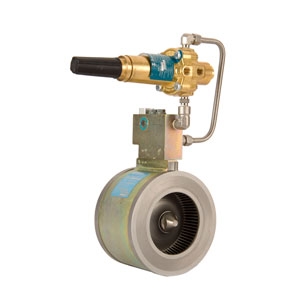Honeywell-AMCO AFV ANSI 600#-4″Natural gas regulator
Brand : AMCO
Type: AFV ANSI 600#-4"
Origin:USA
Delivery Time: 1-2 weeks

| Axial Flow Valve | Ring | Slightly Open (Kgf/lcm²) | Fully Open (Kgf/lcm²) | Maximum Allowable Differential Pressure (Kgf/lcm²) |
|---|---|---|---|---|
| Comb-Type Manifold | Venturi Manifold | Comb-Type Manifold | ||
| Model: AFV-300 | 5L* | 0.1 | 0.04 | 0.35 |
| Model: AFV-300 | 5 | 0.25 | 0.1 | 0.5 |
| Model: AFV-300 | 7 | 2 | 0.4 | 2 |
| Model: AFV-600 | 7 | 2 | 0.8 | 2 |
*Note: The 5L ring is only applicable to axial flow valves with DN50, 80, 100, 150, 200.
Key: